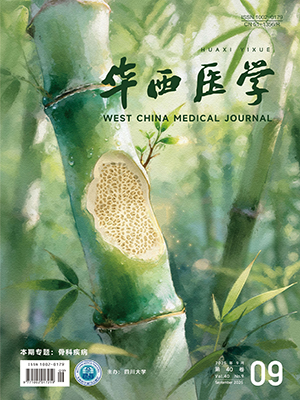| 1. |
Marzo I, Naval J. Bcl-2 family members as molecular targets in cancer therapy[J]. Biochem Pharmacol, 2008, 76(8): 939-946.
|
| 2. |
Yang E, Zha J, Jockel J, et al. Bad, a heterodimeric partner for Bcl-XL and Bcl-2, displaces Bax and promotes cell death[J]. Cell, 1995, 80(2): 285-291.
|
| 3. |
Adams JM, Cory S. The Bcl-2 apoptotic switch in cancer development and therapy[J]. Oncogene, 2007, 26(9): 1324-1337.
|
| 4. |
Niquet J, Wasterlai, CG. Bim, BAD, and Bax: a deadly combination in epileptic seizures[J]. J Clin Invest, 2004, 113(7): 960-962.
|
| 5. |
Lindsay J, Esposti MD, Gilmore AP. Bcl-2 proteins and mitochondria-Specificity in membrane targeting for death[J]. Biochim Biophys Acta, 2011, 1813(4): 532-539.
|
| 6. |
Datta SR, Dudek H, Tao X, et al. Akt phosphorylation of BAD couples survival signals to the cell-intrinsic death machinery[J]. Cell, 1997, 91(2): 231-241.
|
| 7. |
She QB, Solit DB, Ye Q, et al. The BAD protein integrates survival signaling by EGFR/MAPK and PI3K/Akt kinase pathways in PTEN-deficient tumor cells[J]. Cancer Cell, 2005, 8(4): 287-297.
|
| 8. |
Ellert-Miklaszewska A, Kaminska B, Konarska L. Cannabinoids down-regulate PI3K/Akt and Erk signalling pathways and activate proapoptotic function of Bad protein[J]. Cell Signal, 2005, 17(1): 25-37.
|
| 9. |
Virdee K, Parone PA, Tolkovsky AM. Phosphorylation of the pro-apoptotic protein BAD on serine 155, a novel site, contributes to cell survival[J]. Curr Biol, 2000, 10(23): R883.
|
| 10. |
刘建, 杨建明, 赵俊. Bcl-xl和Bad蛋白在肺细胞肺癌中的表达[J]. 肿瘤学杂志, 2009, 15(1): 55-58.
|
| 11. |
Zhaolin Xu, Drew Bethune, Sen Rong, 等. 表皮生长因子受体、血管内皮生长因子受体和BAD在非小细胞肺癌中的表达[J]. 中国癌症杂志, 2006, l6(8): 615-621.
|
| 12. |
Jin Z, Gao F, Flagg T, et al. Nicotine induces multi-site phosphorylation of Bad in association with suppression of apoptosis[J]. J Biol Chem, 2004, 279(22): 23837-23844.
|
| 13. |
Su JC, Lin KL, Chien CM,et al. Naphtho[1, 2-b]furan-4, 5-dione inactivates EGFR and PI3K/Akt signaling pathways in human lung adenocarcinoma A549 cells[J]. Life Sci, 2010, 86(5-6): 207-213.
|
| 14. |
Al-Bazz YO, Underwood JC, Brown BL, et al. Prognostic significance of Akt, phospho-Akt and BAD expression in primary breast cancer[J]. Eur J Cancer, 2009, 45(4): 694-704.
|
| 15. |
陈建生, 孙治君, 于冰. 凋亡相关基因bcl-2、bad在乳腺癌中的表达及意义[J]. 重庆医科大学学报, 2009, 34(6): 702-705.
|
| 16. |
Yu B, Sun X, Shen HY, et al. Expression of the apoptosis-related genes BCL-2 and BAD in human breast carcinoma and their associated relationship with chemosensitivity[J]. J Exp Clin Cancer Res, 2010, 29: 107.
|
| 17. |
Khor TO, Gul YA, Ithnin H, et al. Positive correlation between overexpression of phospho-BAD with phosphorylated Akt at serine 473 but not threonine 308 in colorectal carcinoma[J]. Cancer Lett, 2004, 210(2): 139-150.
|
| 18. |
Kim MR, Jeong EG, Chae B, et al. Pro-apoptotic PUMA and anti-apoptotic phospho-BAD are highly expressed in colorectal carcinomas[J]. Dig Dis Sci, 2007, 52(10): 2751-2756.
|
| 19. |
Sinicrope FA, Rego RL, Foster NR, et al. Proapoptotic Bad and Bid protein expression predict survival in stages Ⅱ and Ⅲ colon cancers[J]. Clin Cancer Res, 2008, 14 (13): 4128-4133.
|
| 20. |
Yoo NJ, Lee JW, Jeong EG, et al. Expressional analysis of anti-apoptotic phospho-BAD protein and mutational analysis of pro-apoptotic BAD gene in hepatocellular carcinomas[J]. Dig Liver Dis, 2006, 38(9): 683-687.
|
| 21. |
詹刚, 冯来运. 苦参碱对大肠癌细胞凋亡发生及Bad蛋白表达的影响[J]. 重庆医学, 2009, 38(8): 925-927.
|
| 22. |
黄东胜, 刘新, 刘军伟, 等. PPARγ、STAT-3和BAD在肝细胞肝癌的表达及相互作用研究[J]. 中华普通外科杂志, 2007, 22(11): 859-963.
|
| 23. |
Ranger AM, Zha J, Harada H, et al. Bad-deficient mice develop diffuse large B cell lymphoma[J]. Proc Natl Acad Sci USA, 2003, 100(16): 9324-9329.
|
| 24. |
党秋红, 曾宪旭, 班振英, 等. p-BAD及p-AKT蛋白在宫颈癌癌变过程中的表达及意义[J]. 中国现代医生, 2009, 47(29): 13-15.
|
| 25. |
李佳平, 周洪贵, 唐良萏, 等. Bcl-2基因家族相关蛋白在人卵巢癌耐药细胞凋亡中的作用[J].肿瘤学杂志, 2008, 14(2): 118-120.
|
| 26. |
须霆, 邹青, 汪仪俊, 等. 膀胱癌组织中P-糖蛋白、多药耐药相关蛋白、Bad的表达及其与临床病理的关系[J]. 临床肿瘤学杂志, 2008, 13(5): 446-449.
|
| 27. |
Soung YH, Lee JW, Park WS, et al. BH3 domain mutation of proapoptotic genes Bad, Bmf and Bcl-G is rare in transitional cell carcinomas of the urinary bladder[J]. Pathology, 2006, 38(1): 33-34.
|




